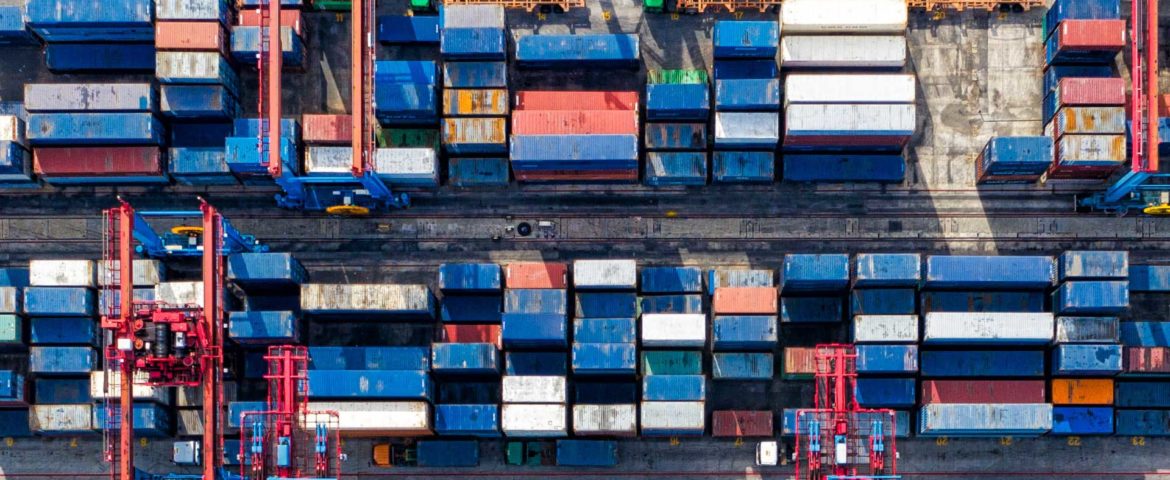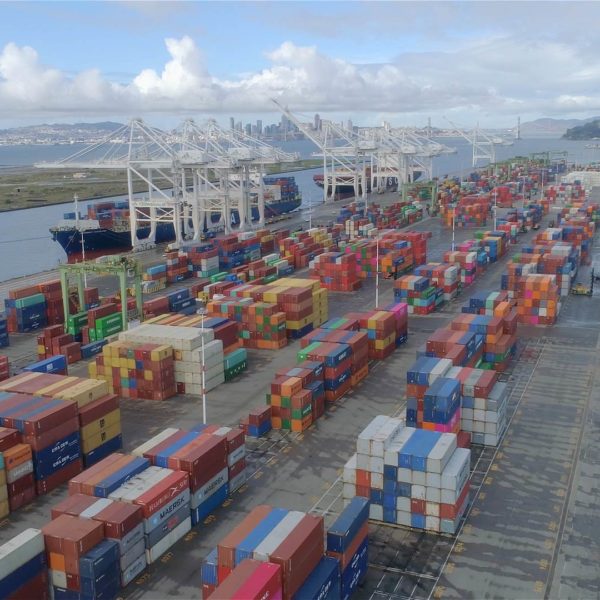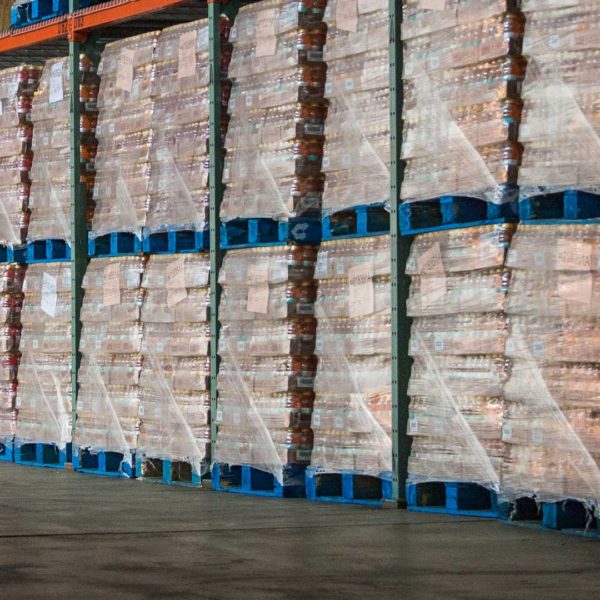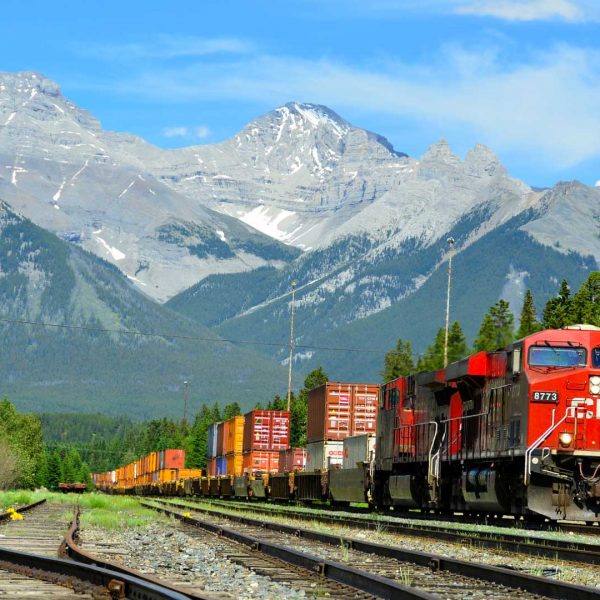Increased supply chain pressure is nothing new, with nearly every business experiencing increased supply chain costs, lack of transportation capacity, and delays across the board by both transportation and supplier side issues.
Total rail traffic is currently up around 15% compared with the prior year, with intermodal loads specifically nearly 34% higher than the same time period of last year.
Congestion and Capacity
Just like trucking, intermodal has seen massive rises in demand, that were mostly unexpected, due to the ongoing pandemic disruptions to supply chains and the unprecedented e-commerce demand by consumers.
Like the many articles talking about port congestion and trucking shortages, intermodal rail terminals have also been significantly congested, which creates delays and can hinder capacity.
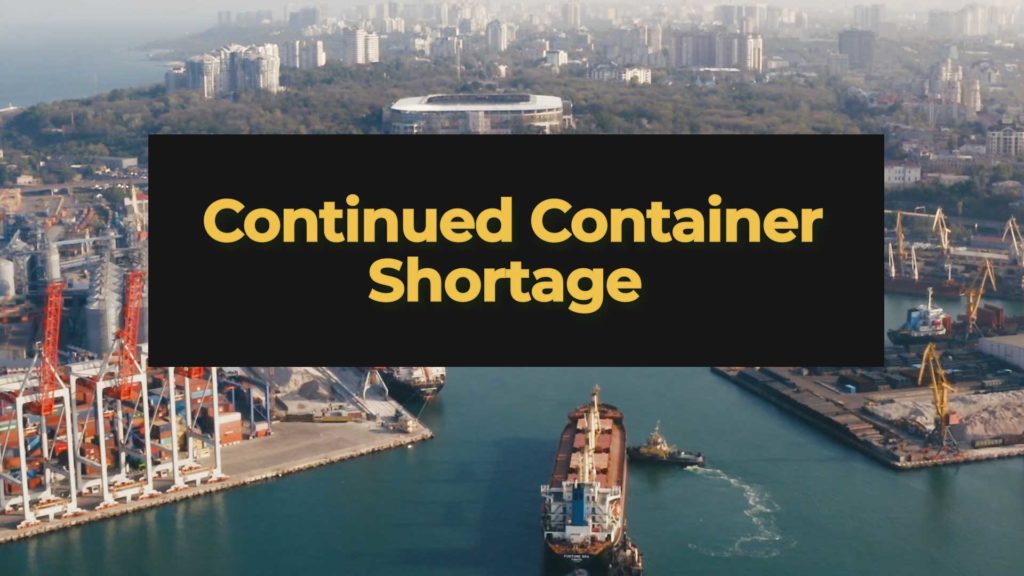
Due to the inherent nature of intermodal needing short-haul trucking for the first and last mine –known as drayage, intermodal is still exposed to trucking pricing increases and capacity crunches for the drayage portion of the trips. Often finding drayage capacity or even chassis is the limiting factor for a railroad or IMC’s lane capacity at any given time.
Travel Time
Travel with intermodal is typically estimated at the trucking time plus a day or two. Note, this can often change somewhat based on delays in ports or transload facilities but is a good rule of thumb.
For goods and freight that aren’t in a rush, savings a few hundred to a thousand dollars per load is a major cost-saving vs OTR trucking.
For highly expedited or time-sensitive freight, we still recommend sticking with OTR.
Green Supply Chain Tips
Green and sustainable supply chain practices are becoming a more core aspect of supply chain planning for many companies. Railroads due to the inherent efficiencies of steel rails with steel wheels, lower grades, less stopping and starting, and a much greater cargo weight capacity per length of the vehicle, are dramatically more efficient than over-the-road trucks. Somewhere around 4x more efficient, or in other words, rail freight is about 75% less polluting than over-the-road trucks. The oft-quoted figure is that a freight train can carry 1 ton of freight nearly 500 miles using only one gallon of fuel.
As trucks adopt more efficient technologies and electric propulsion, trains are doing the same. With numerous rail carriers and equipment manufacturers creating more efficient engine designs, experimenting with LNG fuel, and battery-hybrid systems.
It’s looking more and more likely that a carbon tax will be implemented in the next 5 years, perhaps 10. One of the quickest ways that firms will be able to reduce their cargo emissions within supply chains will be implementing more intermodal into their freight mix.
E-commerce Supply Chain Cost Reduction
Many smaller e-commerce firms or growing e-commerce firms have little experience with full truckload freight or intermodal, instead of relying more on LTL or parcel carriers for inbound and fulfillment services.
While this is a great strategy and any e-commerce firm will move a major percentage of their freight via LTL and parcel, if you are receiving larger loads to your warehouse or a third party fulfillment center, FTL freight is generally more cost-effective per pound of freight and provides better service.
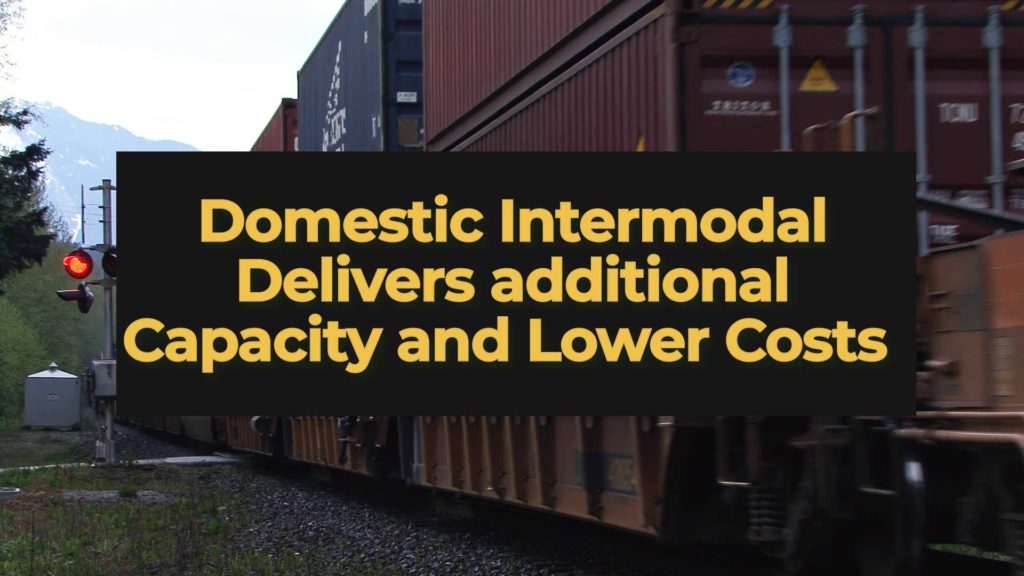
The next step would be converting some of your FTL freight to intermodal on cross-country freight shipping lanes.
If you are important more than 3-5 international ocean containers at a time, considering working with a partner who can transload your freight from the ocean to domestic containers near the port of arrival. Depending on the freight you can generally load 3 domestic containers with freight from 5 ocean containers, or sometimes 2 domestic containers from 3 marine containers. The cost efficiencies will quickly make up the transload fees due to moving significantly fewer containers inbound. Ocean carriers are also getting more strict about the amount of time they allow for the containers to be returned to the port due to the ongoing container shortage.
How to Ship Intermodal?
Intermodal shipping is easier than you might think with a provider like Zmodal. Many shippers have yet to try intermodal and are hesitant because we’ve all heard stories about major delays or accessorial charges, but in reality with an experienced intermodal transportation provider, while delays are possible, generally it will only be a day or so, and only on a small percentage of shipments.
Make sure to work with a door-to-door intermodal provider that has worked with first-time intermodal shippers and can walk you through the process, and make it as “truck-like” as possible.
Blocking and bracing guidance should also be provided for new shippers. Due to the containers being lifted, and the slack action in trains starting and stopping. Freight can easily shift in the journey. This rarely poses a problem, but it is an important consideration when planning how to load the container.
Remember also that intermodal load weight is typically capped at 42,500 lbs vs 45,000 lbs for OTR trucks since intermodal containers are more heavily built to service the duty cycles of the lifts.
Crossborder Freight
The proposed merger of the Kansas city southern and Canadian national railways would be the first “NAFTA” railway, extending from Canada to southern Mexico. While there are some major regulatory roadblocks between the would-be merger partners, it is interesting to speculate on the ease of shipping with one partner from Mexico all the way to Canada.
Initially, A Kansas city Southern- Canadian Pacific merger was on the books, before CN proposed a higher offer. The KCS-CP merger would maintain a significant level of competition from Chicago-New Orleans while also providing the efficiencies of a one-stop shop for Canada- US- Mexico freight movement.
As more and more companies make major investments in nearshoring – often in Mexico – cross-border carload and intermodal freight will continue to grow and play an even more important role in major supply chains. No doubt more cars, heavy machinery, and electronics will be made in Mexico’s factories for consumption in the US and Canada.
Cross-border intermodal freight is an attractive option as well for crossborder shipments since trains do not stop at the border in the same way that trucks do, meaning that transit times for cross-border intermodal freight are extremely competitive with OTR trucks. Cross border freight between Canada, the USA, and Mexico was valued at around $15 billion in April of 2021
Mexico intermodal freight is also regarded to be more secure than OTR trucks, with a lower chance of theft. Lower-level containers on double-stack trains are physically unable to be opened while on the train due to the way they sit down into the good car, while the upper-level containers are in the air and also hard to access.
Expect to see cross-border freight between Canada – USA- Mexico continue to grow with cross-border intermodal shipping playing a more significant role going forward.
Intermodal Chassis Shortage
With the current imbalance of supply chains, with most shippers working to import products, not export them, there is a undersupply of the bare chassis needed at terminals to unload containers from the trains onto the road.
There have been reports of shippers taking more time than normal to unload and have the containers ready to return to the rail yard, sparking intermodal providers to increase accessorial charges on shippers beyond the typical 2-hour time limit. This has also been attributed to a lack of personnel both at loading docks and drayage drivers.
Many lease fleets, railroads, and asset-based IMC firms have made public statements that they will expand their fleets of chassis and containers with more purchases.
Supply Chain Shipping Resilience
Perhaps “the” lesson from the ongoing global pandemic was the hard lesson learned that supply chain resilience and diversity of supplier, carrier, and supply chain partners is extremely important to keeping stock on shelves.
Many supply chains simply relied on one mode of transportation, one supplier, and one or two carriers. While being able to leverage volume for cost reduction is nice, when major disruptive events occur, it creates an expensive situation with many supply chains grinding to a halt.
Going forward many fortune 500 firms, such as Apple, Nike, Toyota and others have made clear statements that supply chain diversity and resilience will become a much larger core focus than in year past. The major challenge being how to keep supply chain costs low, while creating a supply chain that can better withstand disruption. Lots of data modeling, analytics, and trial and error will lead supply chains to have different practices for maintaining and defining reliable supply chains.
Intermodal Projection
Intermodal is very likely to continue a significant growth streak over the next couple of years. There are yet to be any strong signs of a cooling freight or e-commerce market, which will keep freight prices at the currently elevated rates and reduced capacity for some time. Intermodal will continue to provide an extra source of capacity as well as reduce supply chain costs on long haul runs, as well as decreasing carbon emissions within a supply chain.
While the freight market is always cyclical, it will likely be sometime before the market flips with volume drops unless a major economic event occurs and consumer demand wains.
Want to incorporate intermodal into your supply chain? Contact Us
Zmodal provides quick and easy door to door turnkey intermodal services with an integrated easy to use dashboard and around the clock customer support.
Zmodal is a top intermodal shipping company providing door-to-door intermodal, and full truckload services nationwide throughout our digital supply chain dashboard which provides easy route searching, booking, document management, and analytics. CONTACT US if you want to lower your supply chain costs or want access to North American intermodal capacity.
